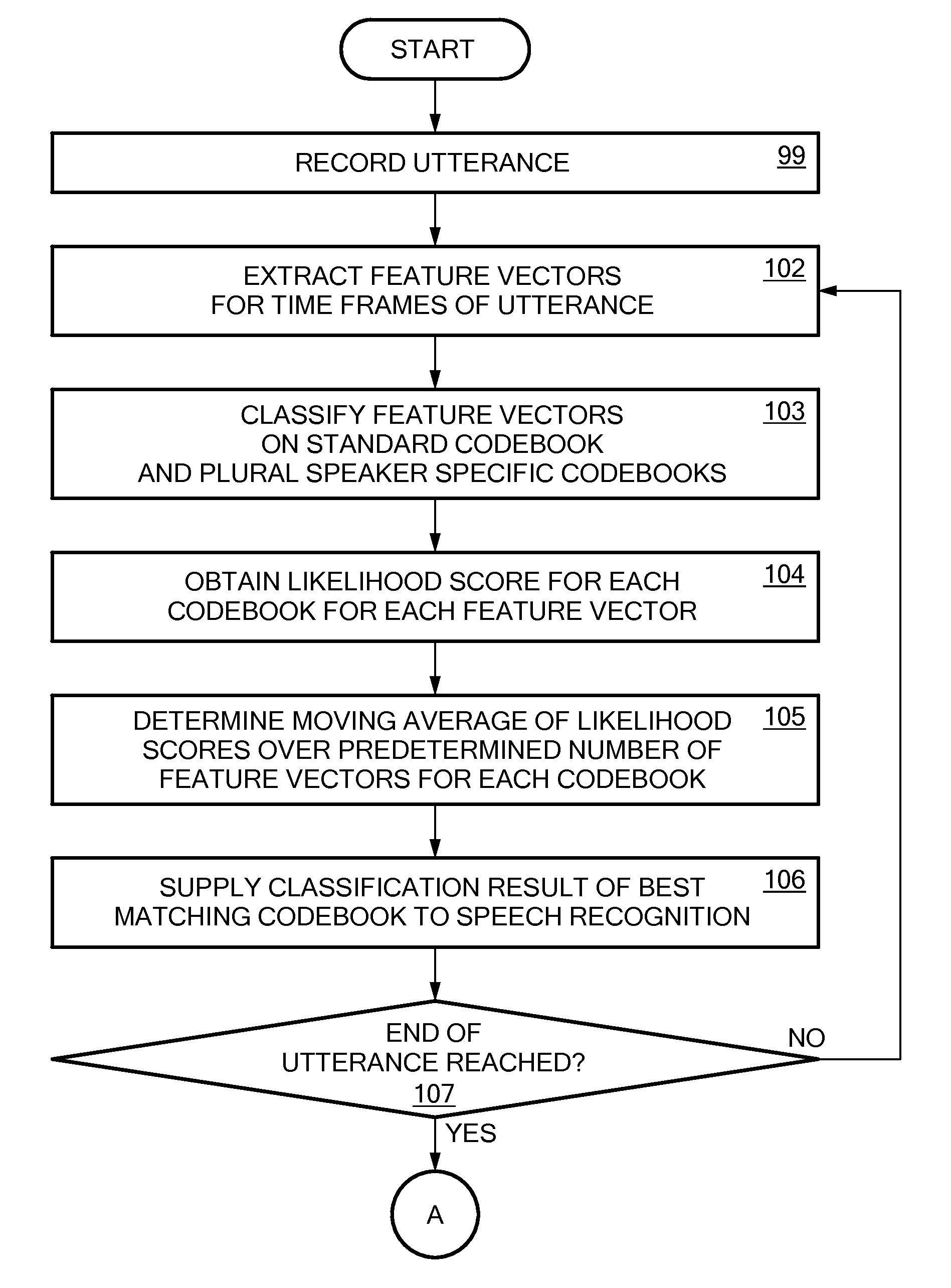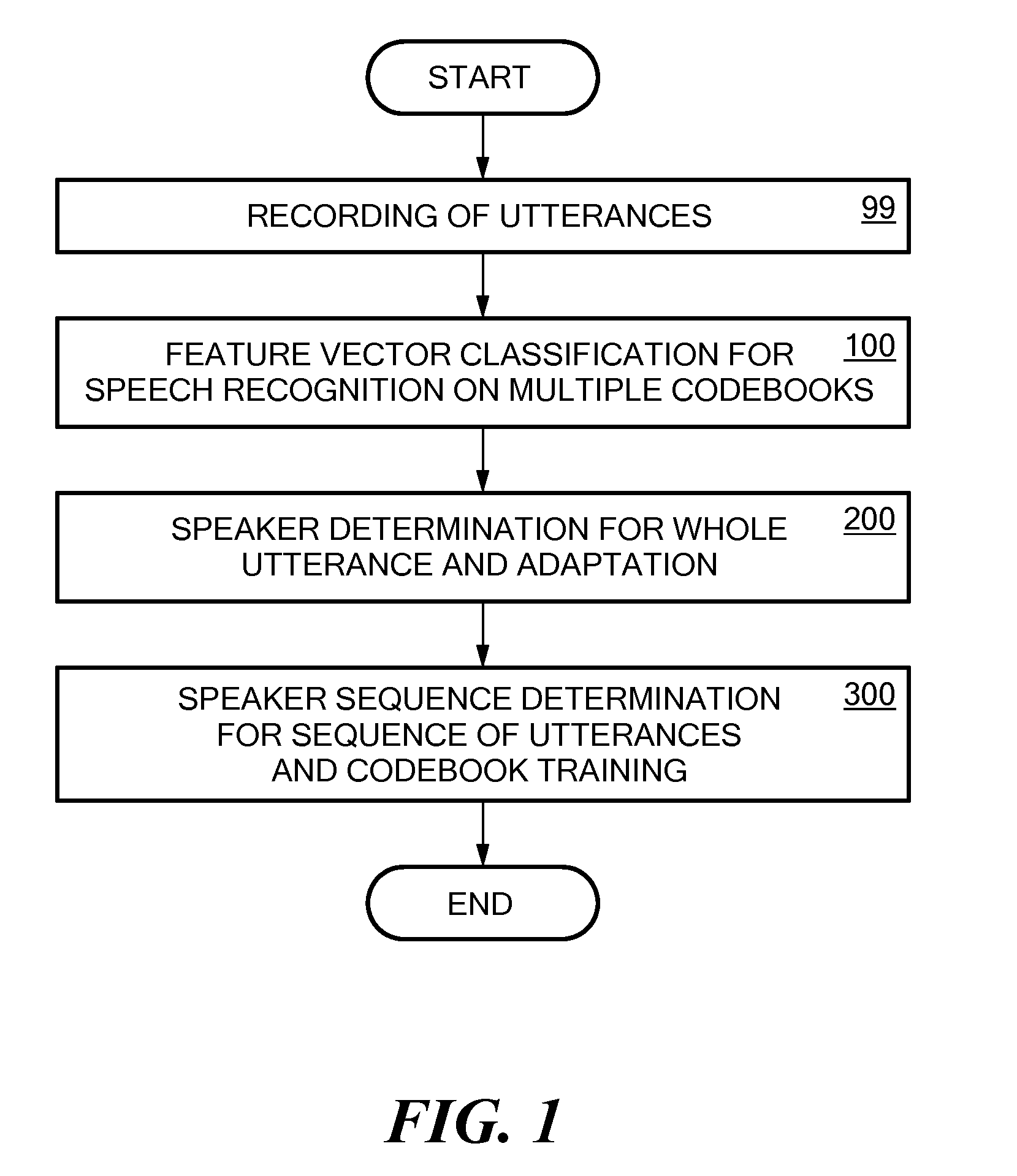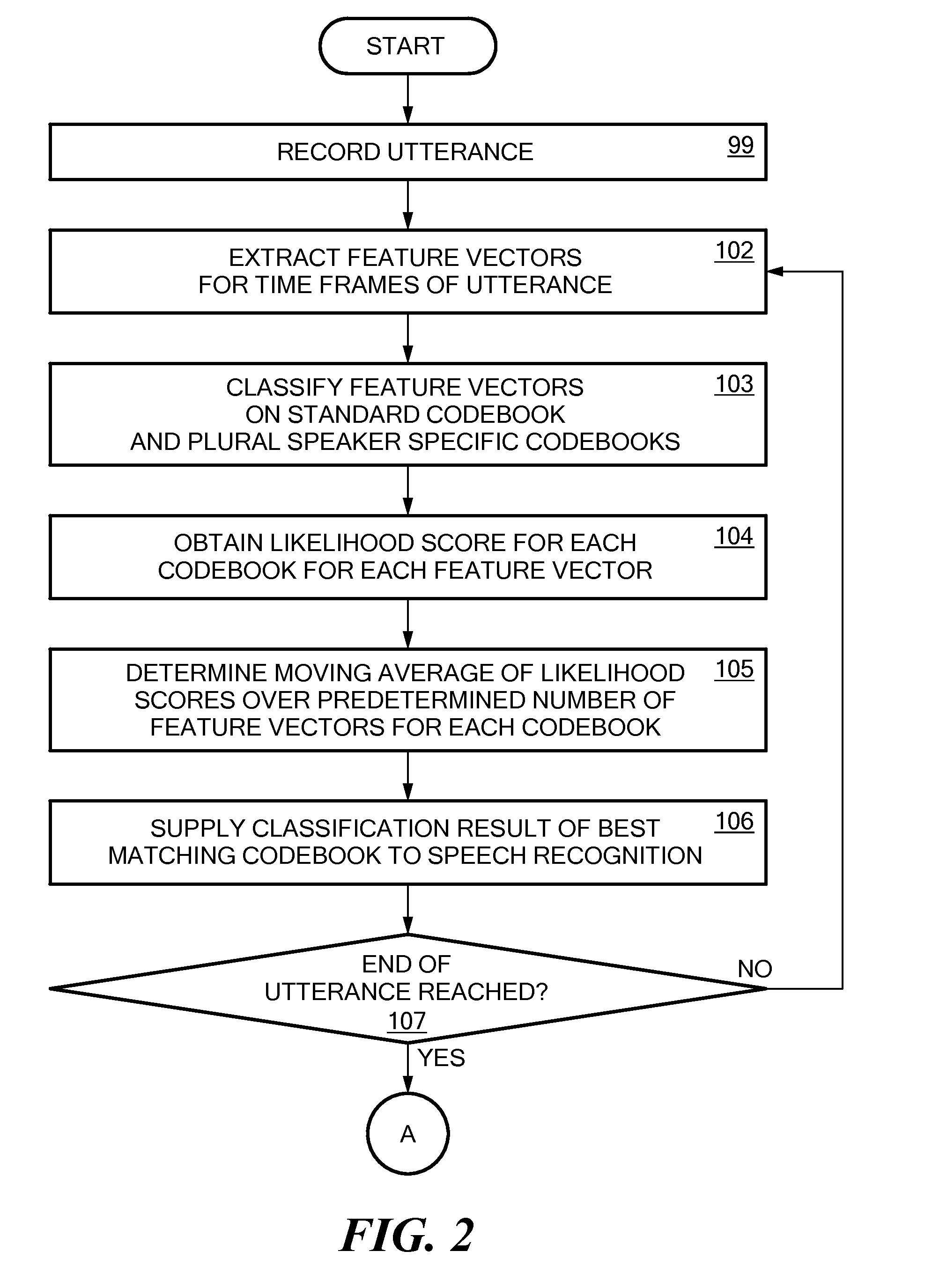Speaker Recognition in a Speech Recognition System
a speech recognition and speaker technology, applied in speech analysis, speech recognition, instruments, etc., can solve the problems of inconvenient training phase, often impractical, and inability to reliably determine the speaker of an utterance if codebooks, and achieve the effect of reliably recognizing a speaker
- Summary
- Abstract
- Description
- Claims
- Application Information
AI Technical Summary
Benefits of technology
Problems solved by technology
Method used
Image
Examples
Embodiment Construction
[0046]The present invention aims at providing a method which enables a speaker recognition based on a variable number of speaker models in different training states. Further, it should allow the determination of a posteriori probability for each speaker at each point in time. The present invention recognizes that the logarithm of likelihood scores for speaker models for a particular utterance strongly depends on the training status of the speaker model. A conventional comparison of likelihood scores, such as in the maximum likelihood method, does not comprise any information about the confidence of the result of the comparison, as for differently trained speaker models, likelihood differences have to be interpreted differently. As the user adapted speaker models may be derived from the same original standard speaker model, the likelihood values obtained for untrained speaker models will derive less from the standard model than for well trained models.
[0047]Further, the speaker ident...
PUM
 Login to View More
Login to View More Abstract
Description
Claims
Application Information
 Login to View More
Login to View More - R&D
- Intellectual Property
- Life Sciences
- Materials
- Tech Scout
- Unparalleled Data Quality
- Higher Quality Content
- 60% Fewer Hallucinations
Browse by: Latest US Patents, China's latest patents, Technical Efficacy Thesaurus, Application Domain, Technology Topic, Popular Technical Reports.
© 2025 PatSnap. All rights reserved.Legal|Privacy policy|Modern Slavery Act Transparency Statement|Sitemap|About US| Contact US: help@patsnap.com



